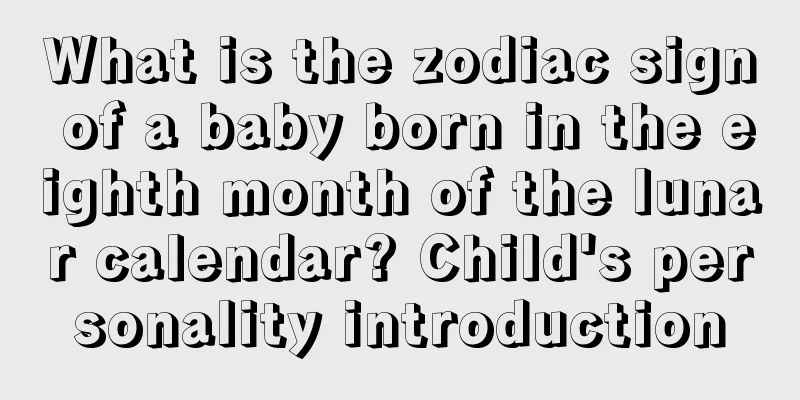What is the date of Frost Descent in 2017? What is the climate like during the Frost Descent solar term?

Introduction: Among the 24 solar terms, Frost Descent is one of them. Its arrival means that the weather is about to get colder and dew is likely to condense into frost. There is a folk saying that "it is better to nourish yourself during Frost Descent than to nourish yourself throughout the year", which shows the impact of this solar term on people. Good days are always in the late autumn season, and the golden color always gives us the best confidence. The fortune teller website's almanac interprets every day of the ninth month of the lunar calendar.What is the date of Frost Descent in 2017?Gregorian calendar: Monday, October 23, 2017 Lunar calendar: September 4, 2017What’s the weather like during the Frost Descent solar term?On the 23rd (Monday), it will be sunny and cloudy, with temperatures ranging from 14 to 20℃.What are the climate characteristics of the Frost Descent solar term?The Frost Descent solar term means that the weather is getting colder and frost begins to fall. In the southern regions at the southerly latitudes, the average temperature is around 16°C, and there are still three solar terms before the first frost. In the river valleys of southern South China, frost does not appear until midwinter. Of course, even in places with the same latitude, due to different altitudes and terrains, the temperature and humidity of the air close to the ground are different, and the first frost period and the number of frost days will also be different. [1] During the Frost Descent season, the cool autumn wind has already reached the Flower City of Guangzhou. The average temperature in northern Northeast China, eastern Inner Mongolia and most of Northwest China is already below 0℃."Frost begins with the Frost Descent" reflects the climatic characteristics of the Yellow River Basin. As for the number of frost days throughout the year, some places on the Qinghai-Tibet Plateau have frost and snow even in summer, with more than 200 frost days per year, making it the place with the most frost days in my country. The annual frost days in eastern Tibet, southern Qinghai, Qilian Mountains, western Sichuan Plateau, northwestern Yunnan, Tianshan Mountains, Altai Mountains, western mountains in northern Xinjiang, Northeast China and eastern Inner Mongolia are more than 100 days. The vast areas south of the Huaihe River and Han River and east of the eastern slope of the Qinghai-Tibet Plateau have less than 50 days. South of 25° north latitude and in the Sichuan Basin have only about 10 days. The area south of Fuzhou and along the coastal areas of Guangdong and Guangxi has an average of less than 1 day per year. Xishuangbanna, Hainan, southern Taiwan and the South China Sea islands do not have any frost. The first frost in autumn is called the first frost. The earlier the first frost occurs, the greater the damage to crops. The first frost in various parts of my country is gradually delayed from north to south and from mountains to plains. Except for areas with frost all year round, the earliest area to see frost is the northern part of Greater Khingan Range, where frost can be seen at the end of August; the first frost in most parts of Northeast China, Inner Mongolia and northern Xinjiang is mostly in September; in early October, frost has appeared in Shenyang, Chengde, Yulin, Chamdo to Lhasa; in early November, frost can be seen in the Shandong Peninsula, Zhengzhou, Xi'an and northwestern Yunnan; areas in eastern my country around 30° north latitude, the Han River, and Yunnan Province around 20° north latitude will not begin to see frost until early December; and in Xiamen, Guangzhou to Baise and Simao, frost is not seen until early January after the New Year. Frost is formed when water vapor on the ground condenses when it encounters cold weather, so "Frost Descent" does not mean frost has fallen, but rather means that the weather is cold and the first frost will appear on the earth. From a scientific point of view, the saying that "dew turns to frost" is inaccurate. Frozen dew is formed by the freezing of dewdrops, which are hard small ice beads. Frost refers to the phenomenon of crop damage caused by a sudden drop in temperature. The damaging temperature varies depending on the crop, variety and growth period. For frost to form, the temperature of the ground or ground objects must drop below 0°C, and the water vapor content in the air in the ground layer must reach a certain level. Therefore, frost does not necessarily occur when frost occurs, and frost does not necessarily occur when frost occurs. However, because the temperature is already relatively low when frost appears, if it continues to cool down, it will easily lead to frost. "Frost kills all the grass." Plants hit by severe frost have no vitality at all. This is because the liquid in the plant body freezes into ice crystals due to frost, proteins precipitate, and water in the cells seeps out, causing the protoplasm to become severely dehydrated and deteriorate. "The wind, the knife and the frost are pressing hard" shows that frost is ruthless and cruel. In fact, although frost and freezing are closely related, it is "freeze" rather than "frost" that harms crops. Someone once conducted an experiment: two leaves of a plant were placed in boxes with the same low temperature. One of the leaves was covered with frost, while the other was not. As a result, the frost-free leaf was severely damaged, while the frost-covered leaf only had slight signs of frost damage. This shows that frost not only cannot harm crops, on the contrary, when water vapor condenses, it can also release a large amount of heat. 1 gram of water vapor at 0℃ condenses into water, releasing 667 calories of vaporization heat. It will turn heavy frost into light frost, and light frost into dew, thus avoiding frost damage. Rather than saying "Frost kills all grass", it is better to say "Frost kills all grass". Frost is a sign of cold weather, and freeze is the enemy that kills crops. Since there is frost when there is freezing (sometimes there is no frost, it is called black frost), autumn frost and spring frost are collectively called frost. Summary: The above is the article topic about (What month and date is Frost Descent in 2017? What is the climate like during the Frost Descent?), I hope it can help you. |
<<: What is the date of Frost Descent in 2017? Is it a good time to move during the Frost Descent?
>>: What should you pay attention to when eating persimmons during the Frost Descent?
Recommend
Names for people born on Father's Day
How can you name a baby born on Father's Day w...
Is it suitable to install a bed during the Mid-Autumn Festival in 2018? What should I pay attention to when setting up the bed?
Setting up the bed is an important matter in our t...
What is the fate of people born in February of the lunar calendar? What is the fate of the 12 zodiac signs born in February of the lunar calendar?
Introduction: New life is born every month, and pe...
Is it good for a girl to be born on the twelfth day of the first lunar month in 2021? Destiny Analysis
The fate of a girl is related to the time of her b...
Proverbs about the Frost Descent solar term, Frost Descent in the Twenty-Four Solar Terms
Frost means the end of autumn and the arrival of w...
Are boys born on Xiaoxue Day in 2021 good? What kind of personality do they have?
The Minor Snow solar term ushers in a severe winte...
What day is New Year's Day? What are the customs on New Year’s Day?
New Year’s Day is a three-day holiday and is a leg...
Is the second day of the first lunar month in 2021 an auspicious day? The hexagram of February 13, 2021
Introduction: Every day unfolds differently, so [I...
Is the third day of the tenth lunar month in 2019 an auspicious day for a funeral? What are the taboos for funerals?
Introduction: An auspicious day must be chosen for...
Is it a good idea to get married on the ninth day of the tenth lunar month in 2021? Which days are not suitable for marriage?
In the golden autumn of October, there is a beauti...
Is the 15th day of the fifth lunar month in 2017 a good day? What does the auspiciousness and inauspiciousness of the time mean?
Introduction: In our country, when planning a wedd...
How is the 24th day of the eighth lunar month in 2021? Can I make a bed?
You need to choose a time to set up the bed. It do...
Is it not possible to cut hair on the beginning of summer in 2021? What should you pay attention to when getting a haircut?
The quality of a haircut at different times is dif...
An introduction to the position of the God of Wealth on the Great Heat Day of 2021. Where is the God of Wealth at different times?
The position of the God of Wealth is different eve...
Is it good for a girl born on September 12, 2020? How is her overall fortune?
Introduction: A new life is born every day, and th...









